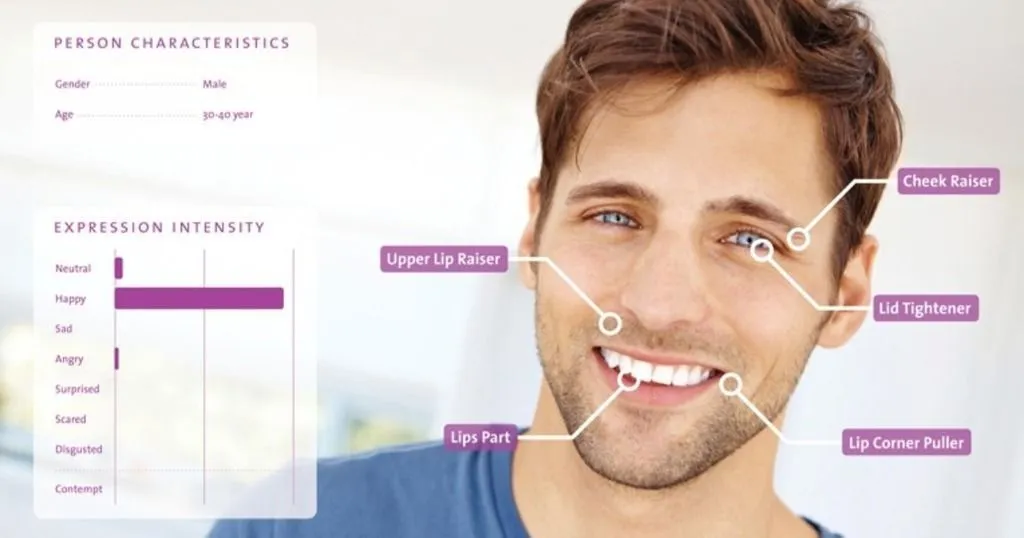Behavioral techniques to empower consumers: resisting persuasion by controlling
The role of facial expression in resisting enjoyable advertisements.
Posted by
Published on
Mon 15 Jun. 2015

Over a period of 30 months, Peter Lewinski, Research Fellow at the University of Amsterdam and VicarVision B.V., carried out 12 experiments with an automated facial expression coding software called FaceReader Online. This new neuromarketing technology helped him to test more than 1200 facial emotional reactions to dozens of famous advertisements.
The experiments yielded 1 million frames that provided more than 10 million data points to analyze on variables such as emotions of happiness, sadness, anger, surprise, fear, disgust, contempt or valence, arousal, and attention.
The role of facial expression in resisting enjoyable advertisements
All of the experiments are part of a 200-page PhD dissertation, titled “The role of facial expression in resisting enjoyable advertisements”, to be publicly defended on 24 June 2015 at the University of Amsterdam.
The funding for this project came from a European Union €3.76 Million grant for KULeuven, Utrecht University, London Business School, INSEAD, ESMT, Philips, Tobii, and VicarVision to establish the European Union-wide “Consumer Competence Research Training (CONCORT)” network.
Effective counter persuasion
Because of the sheer detail and amount of data and scalability of the cloud-based analysis, Mr. Lewinski was able to extract previously unknown insights on how consumers can resist persuasion by controlling their facial expressions. Mr. Lewinski’s research was one of 14 EU-wide projects within the CONCORT network, and his project focused on establishing behavioral techniques that consumers can use to counter the persuasion they face from powerful and emotional TV and internet advertisements.
To illustrate how this is possible, imagine that you are watching a funny advertisement and you are enjoying it even though the ad is promoting unhealthy food. Somewhere, on the edge of your consciousness, you notice that you are smiling. You suddenly realize that this funny advertisement not only targets your feelings to make you feel good but also it makes you move the muscles in your face involuntarily so that your facial muscle form a simple smile.
In the past, it was shown that amusing ads work because they make consumers “feel good.” However, a complementary explanation might be equally plausible. It could be that such ads evoke positive facial expressions of consumers (i.e. those ads move consumers’ bodies). Figuratively speaking, such ads are taking control of consumers’ bodily responses in a way that consumers enjoy such bodily experience without really realizing it.
Facial feedback hypothesis
The mechanism behind a smile influencing how consumers feel about the advertisement comes from a theoretical mechanism called facial feedback hypothesis, pioneered in 1988 by Fritz Strack. The idea is simple: if a person puts on a fake smile for around 10 seconds, it will make feel them better because of the inherent like between expression and emotion (i.e. a smile and happiness).
This link between facial expression and feelings about objects, products, or advertisement is grounded further in the embodiment, the idea that our own bodies influence how we think and feel. However, the crucial question for resisting persuasion remains: if there is a connection between an expression and the feeling, is it possible to directly modify positive facial expressions to decrease positive feelings felt about advertisements?
Control expressions of emotion
In this thesis, it is argued that consumers can resist persuasion by controlling their facial expressions of emotion when exposed to advertisements. Following the embodiment literature and the facial feedback hypothesis, it is proposed and demonstrated that controlling the expression of emotions elicited by an ad (for example, refusing to smile) might be a fruitful way to resist the ad’s persuasive potential.
Specifically, if consumers are instructed to control their emotions and not to express any while watching an advertisement, it leads them to like the advertisement and the brand less and they are less willing to purchase the product.
Furthermore, the consumers might receive no instruction but watch the same advertisement with someone else who shows skeptical and negative facial expression to these enjoyable advertisements. The negative facial expressions of the skeptical co-viewing person are mimicked by the consumer and thus decrease the consumer’s own positive facial expression.
The lack of feedback from positive facial expression again leads said consumer to like the advertisement and the brand less as well as being less willing to purchase the advertised product.
Resist the persuasion of advertisements
The bottom line message for consumers is this – if you want to resist the persuasion of advertisements, do not laugh at advertisement or watch them with someone who does not laugh.
Podcast
If you would like to listen to 34 minutes podcast about this specific research on iTunes from Mr. Lewinski, see here for Podcast #61: https://itunes.apple.com/au/podcast/web-psychologist-podcasts/id691198046?mt=2#
Bio
Mr. P. (Peter) Lewinski, MSc is a Marie Curie Research Fellow in VicarVision in ITN CONCORT. He is also a PhD candidate (2012-2015) in Persuasive Communication at Amsterdam School of Communication Research (ASCoR) at the Faculty of Social and Behavioural Sciences – University of Amsterdam, the Netherlands.
His promotors were – prof.dr. E.S. Tan (UvA); – dr. M.L. Fransen (UvA) and M. den Uyl (Sentient Machine Research group). His academic interests are consumer emotions, embodiment, and neuromarketing.
References
- Lewinski, P.; Fransen, M. L.; Tan, E.S. (2014). Predicting advertising effectiveness by facial expressions in response to amusing persuasive stimuli. Journal of Neuroscience, Psychology, and Economics, 7(1), 1-14. doi: 10.1037/npe0000012
- Lewinski, P.; den Uyl, T. M.; Butler, C. (2014). Automated facial coding: Validation of basic emotions and FACS AUs recognition in FaceReader. Journal of Neuroscience, Psychology, and Economics, 7(4), 227-236. doi: 10.1037/npe0000028
Related Posts

5 tips on how to measure facial expressions

Why you should use custom expressions in your facial expression analysis

